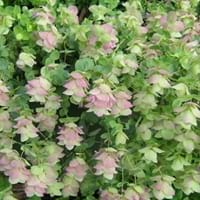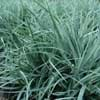Life Span
Perennial
Perennial
Origin
Hybrid origin
Eastern Asia, Japan
Types
Kent Beauty
Amethyst Falls
Barbara Tingey
Not Available
Number of Varieties
Not Available
Habitat
Grassland, Open scrub, Rocky areas
Old fields, stream banks
USDA Hardiness Zone
5-8
4-8
Sunset Zone
Not Available
A3, 2b, 3a, 3b, 4, 5, 6, 7, 8, 9, 10, 11, 12, 13, 14, 15, 16, 17, 18, 19, 20, 21, 22, 23, 24
Habit
Clump-Forming
Oval or Rounded
Minimum Height
Not Available
Minimum Width
Not Available
Flower Color
Pink
Yellow, Yellow green
Flower Color Modifier
Bicolor
Not Available
Fruit Color
Not Available
Red orange
Leaf Color in Spring
Dark Green
Light Green
Leaf Color in Summer
Dark Green
Green
Leaf Color in Fall
Dark Green
Purple, Orange, Burgundy, Crimson
Leaf Color in Winter
Light Green
Not Available
Plant Season
Summer, Fall
Spring, Summer, Fall, Winter
Sunlight
Full Sun
Full Sun, Partial Sun
Type of Soil
Loam
Clay, Loam, Sand
The pH of Soil
Neutral, Alkaline
Acidic, Neutral, Alkaline
Soil Drainage
Well drained
Average
Bloom Time
Late Summer, Early Fall
Spring, Late Spring
Tolerances
Drought
Pollution, Drought, Salt, Soil Compaction
Where to Plant?
Container, Ground, Pot
Ground, Pot
How to Plant?
Seedlings
Seedlings
Plant Maintenance
Medium
Medium
Watering Requirements
Allow soil to be completely dry in between waterings, Does not require lot of watering, Water twice a day in the initial period, Water when soil is dry
Requires regular watering during dry weather
In Summer
Lots of watering
Lots of watering
In Spring
Moderate
Moderate
In Winter
Average Water
Average Water
Soil pH
Neutral, Alkaline
Acidic, Neutral, Alkaline
Soil Type
Loam
Clay, Loam, Sand
Soil Drainage Capacity
Well drained
Average
Sun Exposure
Full Sun
Full Sun, Partial Sun
Pruning
Remove damaged leaves, Remove dead branches, Remove dead leaves
Remove damaged leaves, Remove dead branches, Remove dead leaves
Fertilizers
All-Purpose Liquid Fertilizer
All-Purpose Liquid Fertilizer
Pests and Diseases
Red blotch
Red blotch, Sunken patches
Plant Tolerance
Drought
Drought
Flowers
Yes
Insignificant
Flower Petal Number
Single
Single
Fragrant Leaf
Not Available
No
Foliage Texture
Fine
Medium
Foliage Sheen
Matte
Matte
Attracts
Butterflies
Birds
Allergy
Not Available
Not Available
Aesthetic Uses
Showy Purposes
Borders
Beauty Benefits
Not Available
Not Available
Environmental Uses
Air purification
Air purification
Medicinal Uses
Bloating, Bronchitis, Cough, Cramps, Croup, Gastrointestinal disorders, Headache, Rheumatoid arthritis, Urinary tract problems
Anthelmintic, Antibacterial, Antiseptic, Cancer
Part of Plant Used
Leaves
Fruits, Leaves
Other Uses
Employed in herbal medicine, Used As Food
Used to make yellow dye
Used As Indoor Plant
Yes
No
Used As Outdoor Plant
Yes
Yes
Garden Design
Container, Edging, Groundcover, Mixed Border
Edging, Foundation, Hedges, Mixed Border, Rock Garden, Wall
Botanical Name
ORIGANUM 'Rose Dome'
BERBERIS thunbergii
Common Name
Ornamental Oregano
Japanese Barberry
In Hindi
सजावटी अजवायन
Japanese Barberry
In German
Ornamental Oregano
Thunberg-Berberitze
In French
ornement origan
Berberis thunbergii
In Spanish
Ornamentales orégano
Berberis thunbergii
In Greek
καλλωπιστικά Ρίγανη
Japanese Barberry
In Portuguese
ornamental Oregano
Japanese Barberry
In Polish
ozdobne Oregano
Berberys Thunberga
In Latin
decentius Oregano
Japanese Barberry
Phylum
Not Available
Magnoliophyta
Class
Magnoliopsida
Magnoliopsida
Order
Not Available
Ranunculales
Family
Lamiaceae
Berberidaceae
Clade
Angiosperms, Eudicots
Angiosperms, Eudicots
Tribe
Mentheae
Not Available
Subfamily
Pitcairnioideae
Not Available
Number of Species
Not Available
Not Available
Importance of Ornamental Oregano and Japanese Barberry
Want to have the most appropriate plant for your garden? You might want to know the importance of Ornamental Oregano and Japanese Barberry. Basically, these two plants vary in many aspects. Compare Ornamental Oregano and Japanese Barberry as they differ in many characteristics such as their life, care, benefits, facts, etc. Every gardener must at least have the slightest clue about the plants he wants to plant in his garden. Compare their benefits, which differ in many ways like facts and uses. The medicinal use of Ornamental Oregano is Bloating, Bronchitis, Cough, Cramps, Croup, Gastrointestinal disorders, Headache, Rheumatoid arthritis and Urinary tract problems whereas of Japanese Barberry is Anthelmintic, Antibacterial, Antiseptic and Cancer. Ornamental Oregano has beauty benefits as follows: Not Available while Japanese Barberry has beauty benefits as follows: Not Available.
Compare Facts of Ornamental Oregano vs Japanese Barberry
How to choose the best garden plant for your garden depending upon its facts? Here garden plant comparison will help you to solve this query. Compare the facts of Ornamental Oregano vs Japanese Barberry and know which one to choose. As garden plants have benefits and other uses, allergy is also a major drawback of plants for some people. Allergic reactions of Ornamental Oregano are Not Available whereas of Japanese Barberry have Not Available respectively. Having a fruit bearing plant in your garden can be a plus point of your garden. Ornamental Oregano has no showy fruits and Japanese Barberry has showy fruits. Also Ornamental Oregano is flowering and Japanese Barberry is not flowering . You can compare Ornamental Oregano and Japanese Barberry facts and facts of other plants too.





